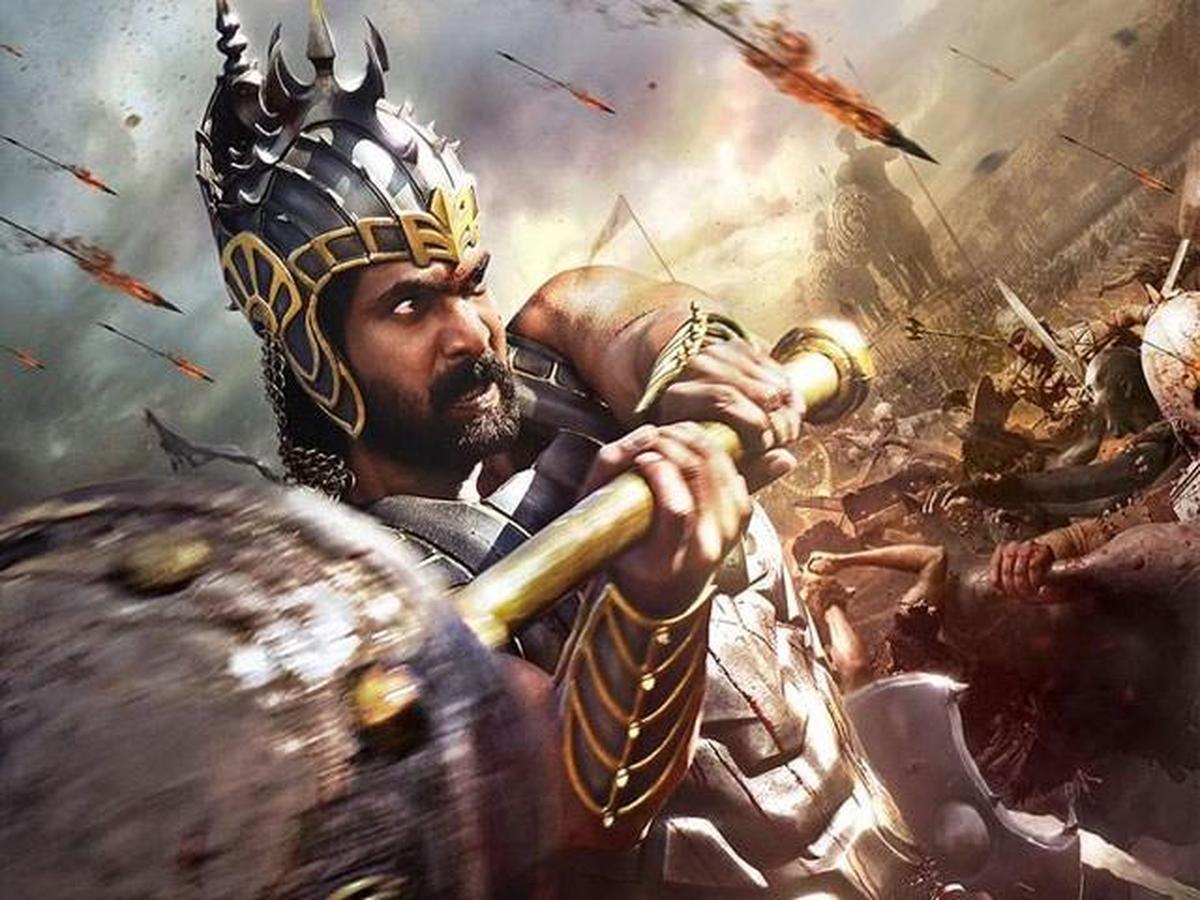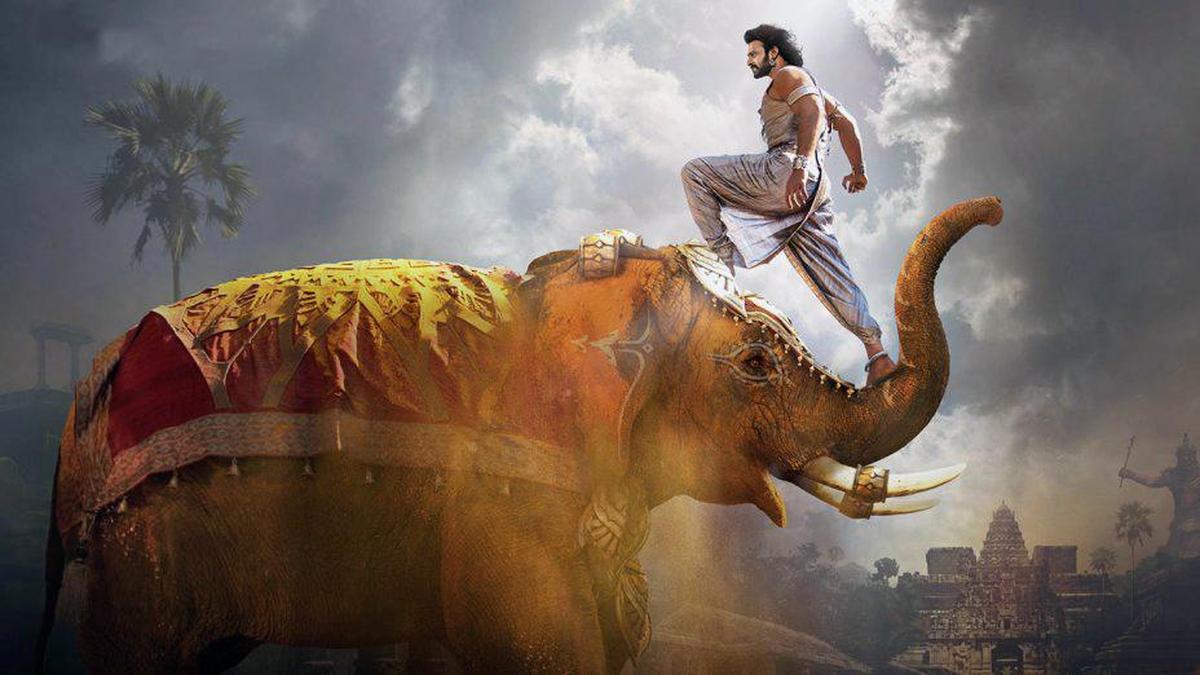In its second week, Baahubali: The Epic, SS Rajamouli’s digitally remastered, re-edited version of the Baahubaliduology films, is holding fort in theatres. At Prasads multiplex in Hyderabad, which boasts of a large format PCX screen, there is a clamour for seats. The nearly four-hour film was released worldwide on October 31 to suit screenings in multiple formats, including cinemascope, EPIC, IMAX and Dolby Vision, to mark a decade since Baahubali: The Beginning.
Shobu Yarlagadda, who produced the Baahubali films along with Prasad Devineni, affirms that The Epic released in nearly 3000 theatres, including 400 screens in the USA, apart from the Gulf region and Europe, among other locations. The Epic was designed to be more than a re-release, offering audiences a seamless, whole story in place of a duology.
Work came up to speed from March 2025. Rajamouli worked with editors Tammiraju, Kotagiri Venkateswara Rao, and Vincent Tabaillon. “There were several iterations; we had test screenings and changes before The Epic was finalised,” the producer informs.
The frenzy that the re-release would create among Indian film goers, especially Telugu movie lovers, was expected. The team also hoped to draw the attention of global audiences who were charmed by RRR. Shobu affirms that apart from the Indian diaspora, the response has been warm from the smaller section of American audiences. The re-release has garnered around $800,000 so far and is expected to cross the million dollar mark.
Beyond the numbers, Shobu is pleased with the reception in large format screens including IMAX and Dolby Vision. “Baahubali 1 was shot in large format but it did not release in IMAX screens. To finally see the film on IMAX screens is satisfying,” he adds.
Digital over film
During the making of Baahubali 1, the push for shooting with digital over film cameras came from cinematographer KK Senthil Kumar, Rajamouli’s long-time collaborator. As the film grew larger than was initially intended, the team spent over a year in pre-production and pre-visualisation. Digital filmmaking was beginning to make inroads in Indian cinema but had not completely replaced film. Senthil was convinced that the time was ripe for change.
“For Magadheera, we shot the end credits song using Arri’s early digital camera, Arri D20. But I was not happy with the results. Digital was still evolving. So for Eega, we went back to film cameras. When the preparation was on for Baahubali, I tested Arri’s new camera and was convinced that we should go digital,” Senthil reminisces.
Senthil preferred digital for two reasons: “Many aspects are not under the cinematographer’s control while working with film. Several factors come into play while transporting the film negative from the go-downs to the sets, loading the filmed footage into cans, transporting them to labs where the negative is developed… It is stressful until the film is developed and we see the results. With digital, I felt we could be rest assured that what we shoot is what will be visible on screen, thanks to the rapidly advancing Digital Intermediate in post production.”
Going digital also helped archive and preserve the footage better. The fate of several older film negatives lies in peril owing to lack of appropriate storage facilities.

On his part, Shobu and his team ensured that every digital file of the Baahubali films — music, layers of visual effects, voice recordings — were catalogued and archived. “Usually the final output of a scene is saved, not every layer of visual effects. But Shobu sir was willing to invest more and ensure a good storage facility. All this helped when we wanted to remaster the film.”
Senthil, in coordination with colourist Shiva Kumar and CV Rao, CTO of Annapurna Studios, worked on the digital remastering for two months. “Digital technology has evolved since Baahubali. We wanted The Epic to look fresh. So we spent time fine tuning the colour grading. During Baahubali 1, the VFX work was delayed and we had very little time to finalise the colour grading. Whenever I re-watched the film, I would think we could have done it better. Since we got this rare opportunity to rework an older film, we gave it our best.”
Subtle enhancements
Shobu reveals that a few subtle VFX enhancements were also carried out. For instance, the colour grading of Devasena’s (Anushka Shetty) makeup was retouched. “A few elements were added in some frames to give further depth to the Mahishmati kingdom. You can also see more layers and depth in the episode where Shividu (Prabhas as Mahendra Baahubali) beheads Bhadra (Adivi Sesh).”
Since the film went through re-editing, M M Keeravani’s background score also went through tweaks to maintain a seamless rhythm.

Rana Daggubati as Bhallaladeva
| Photo Credit:
Special Arrangement
In hindsight, Senthil is glad that the original film was shot in such a way that it was compatible for IMAX projection. “On set, it involved more effort to frame each shot such that all the footage had the necessary elements for immersive film viewing in large format and wide cinemascope format, which was widely prevalent on Indian screens. Back then, only Prasads in Hyderabad had an IMAX screen.”
Senthil, now working on two period films — India House and Svayambhu — has not had the time to travel to other cities to watch Baahubali: The Epic on Imax or Dolby Vision formats, but says he was pleased with the output when he worked on the Dolby Vision format at Annapurna Studios.

Tech forward
Apart from filming in digital, Baahubali’s initial sound design and mixing was done to befit Dolby Atmos, though only a few theatres were equipped with such sound projection in 2015. “Ensuring that we used the best technology available at the time helped us remaster the film with ease,” affirms Shobu.
In the years following the success of the Baahubali films, Shobu has often reflected on what made the films endure in collective memory. “The characters, the story, the emotional depth and the payoffs for every small trait or move resonated with the audiences. That emotion remains fresh, which is why I think people continue to enjoy the film. A lot of thought went into every aspect. The thunder of the giant waterfalls, for instance, was intentional. The sound design helped transport people to the location and offer a memorable theatrical viewing experience.”
Here’s a fun fact. Did you know that Baahubali 2 had the second highest footfall ever for an Indian film, only after Sholay? “Approximately 110-112 million people bought tickets and watched Baahubali 2. This record remains unbeaten. Other films reported 50 to 60 million footfalls,” says Shobu. Clearly, the ‘Why Kattappa killed Baahubali’ curiosity factor and marketing campaign worked.
Published – November 08, 2025 02:49 pm IST

